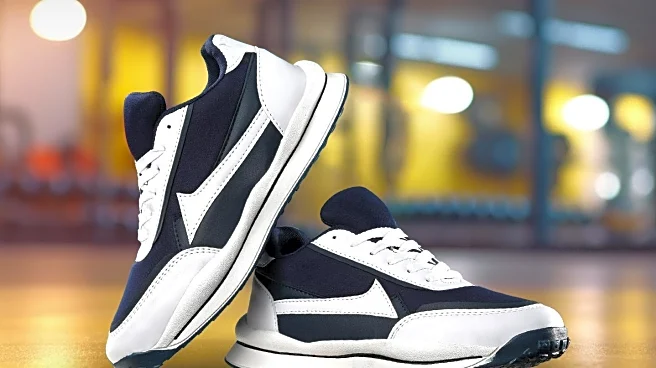What's Happening?
Fitness experts have identified cross-training shoes as essential footwear for a variety of workouts, offering versatility and efficiency. These shoes are designed to accommodate different types of exercises, such as HIIT, weightlifting, plyometrics,
and running, without the need for multiple pairs. Key considerations when selecting cross-training shoes include size and fit, weight, heel-to-toe drop, and support. A comfortable fit is crucial, with a snug midfoot and ample toe room recommended for maximum comfort during workouts. The weight of the shoe should align with the type of workout, with lighter options suitable for agility drills and heavier models for stability during weightlifting. Heel-to-toe drop is important for activities like running, where a neutral drop can promote a natural foot strike. Support varies based on foot type, with neutral shoes supporting natural motion and stability shoes providing added control for flat feet or overpronation.
Why It's Important?
The recommendation of cross-training shoes by fitness experts highlights their importance in promoting efficient and effective workouts. By eliminating the need for multiple pairs of shoes, individuals can save time and money while ensuring they have the appropriate footwear for various activities. This versatility is particularly beneficial for those who engage in multiple types of workouts, allowing them to transition seamlessly between exercises. The focus on fit, weight, and support ensures that individuals can select shoes that cater to their specific needs, reducing the risk of injury and enhancing performance. As fitness routines become more diverse, the demand for adaptable footwear is likely to increase, making cross-training shoes a valuable investment for gym-goers.
What's Next?
As the fitness industry continues to evolve, the demand for versatile workout gear, including cross-training shoes, is expected to grow. Manufacturers may focus on developing shoes that offer even greater adaptability and comfort, catering to the diverse needs of fitness enthusiasts. Fitness experts and trainers are likely to continue advocating for the use of cross-training shoes, emphasizing their benefits in terms of efficiency and performance. Consumers may see an increase in options available, with brands offering a wider range of styles and features to meet the needs of different workouts. Additionally, advancements in technology could lead to innovations in shoe design, enhancing support and comfort for various activities.
Beyond the Headlines
The emphasis on cross-training shoes reflects broader trends in the fitness industry, where versatility and efficiency are increasingly prioritized. This shift may influence other areas of fitness gear, encouraging manufacturers to create products that cater to multiple activities. The focus on adaptability also aligns with the growing popularity of hybrid workouts, which combine elements of different exercise modalities. As consumers seek more flexible options, the fitness industry may see a rise in products designed to support diverse routines, promoting a holistic approach to health and wellness.
















